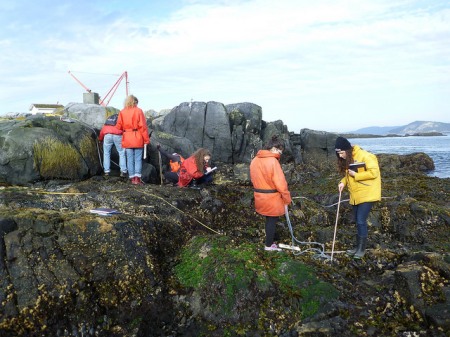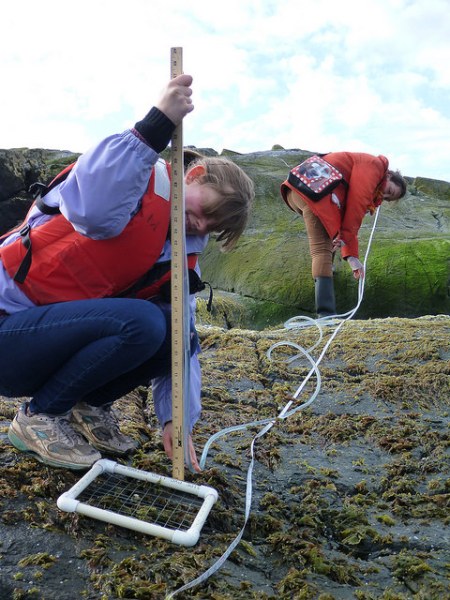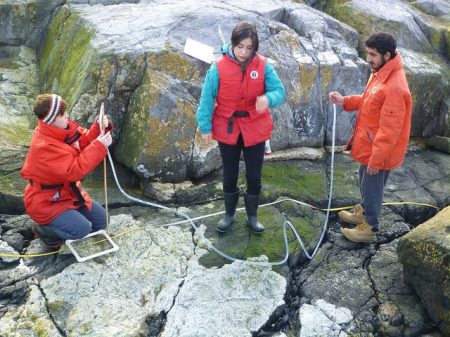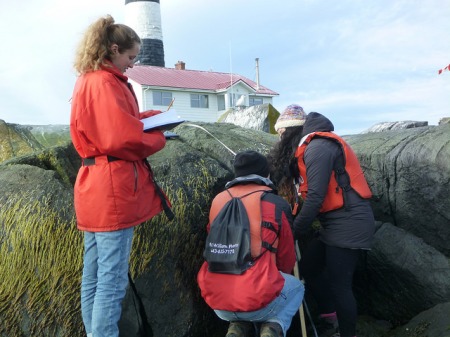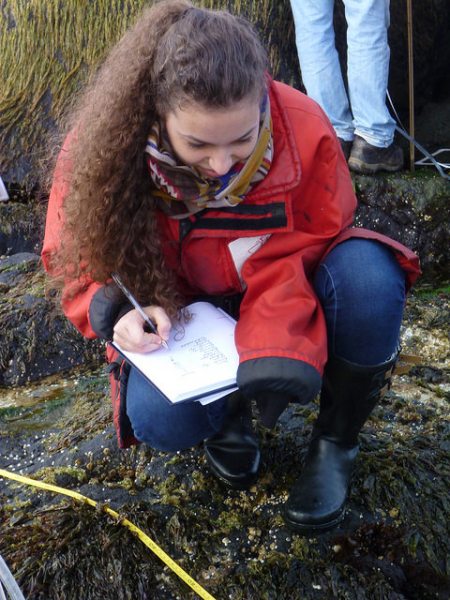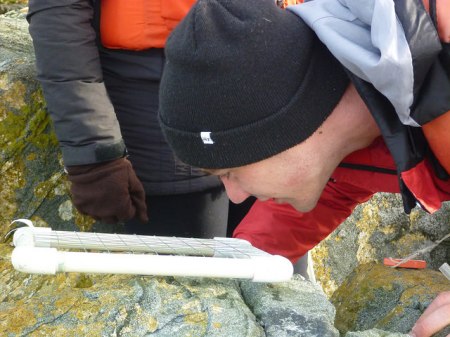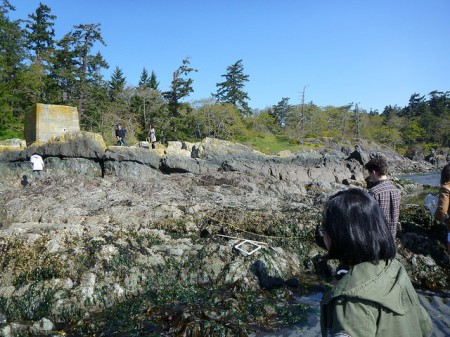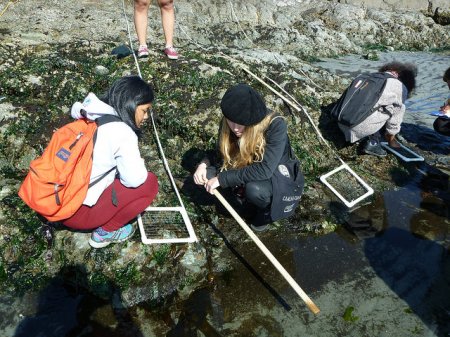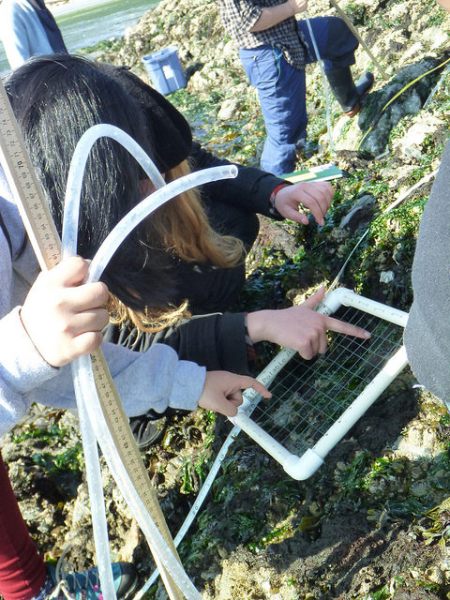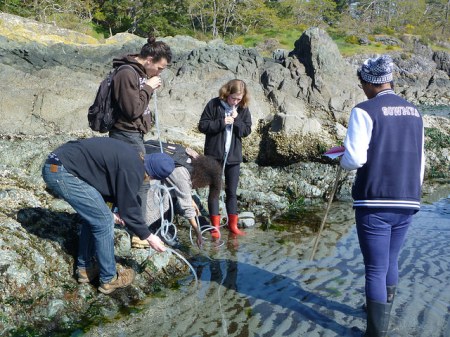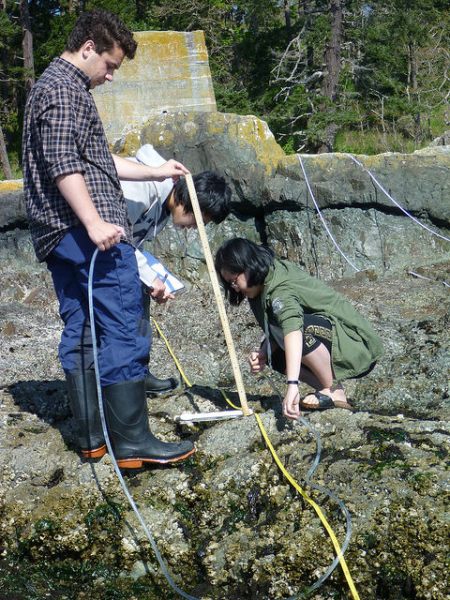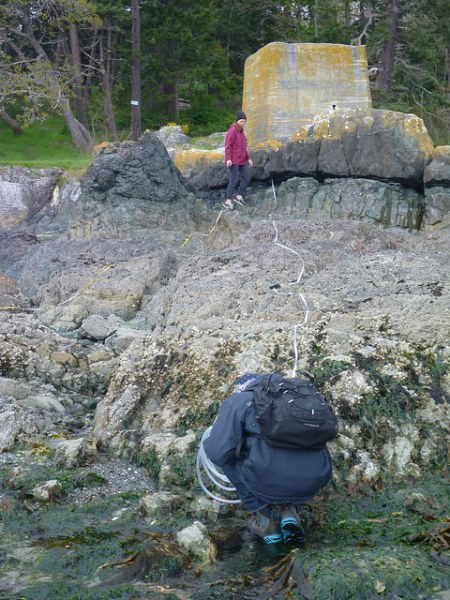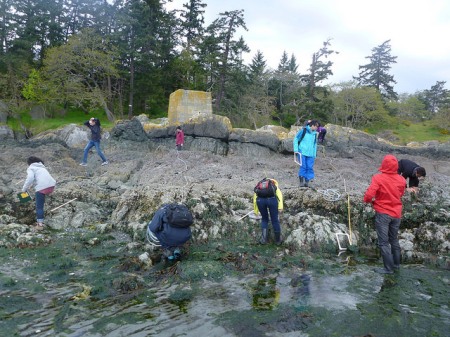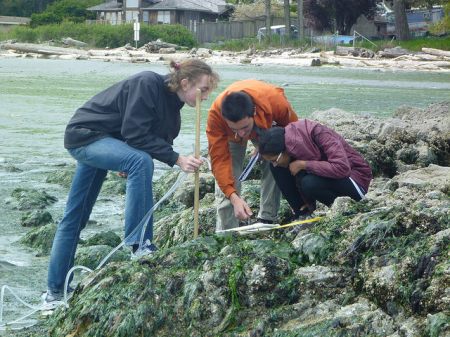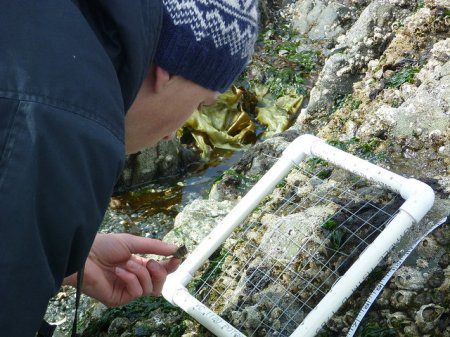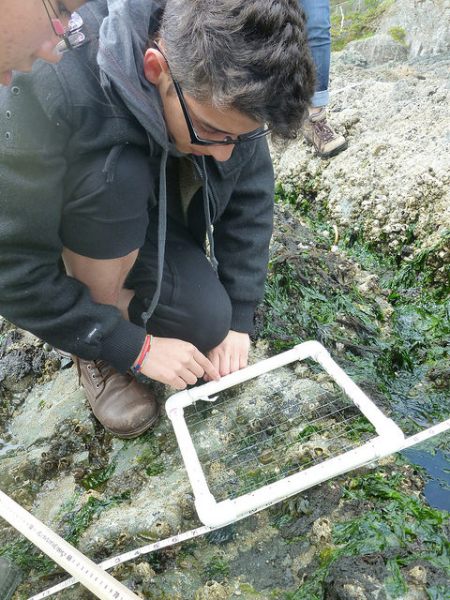On Monday 9 May, 26 Marine Science students travelled to Race Rocks on Hyaku or the Discovery Shuttle (chartered from Ocean River Sports since ‘Second Nature’ is still in the shop) to write their first year field exam.
Upon arriving at Race Rocks, students received their exam papers and instructions to travel to six stations around the island of Great Race Rock.
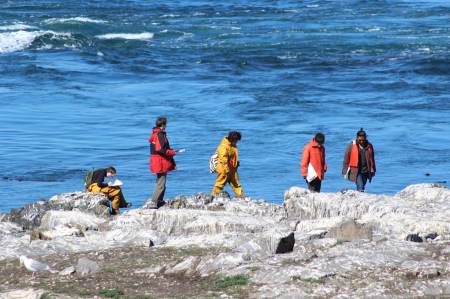
Only two significant challenges on this morning:
- The flies
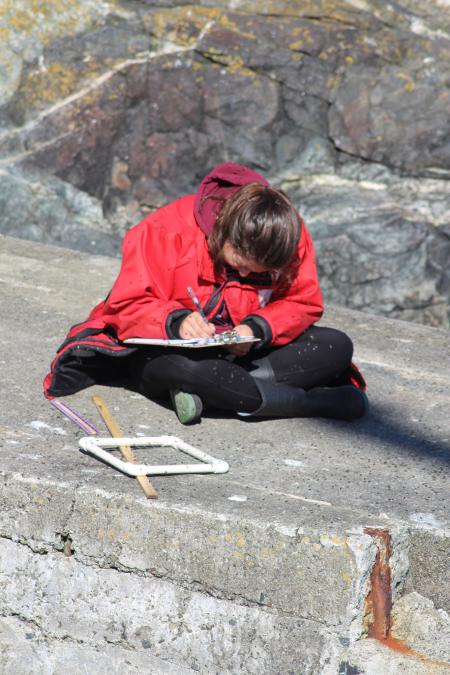
Ilana and flies
- Being charged by an elephant seal while collecting data
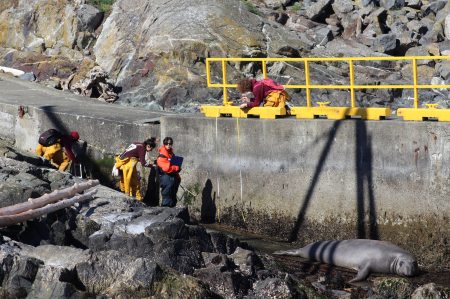
Ploypailin, Lauren, Xue Meng and Jill were all frightened from collecting data on the jetty by an elephant seal making its way to the water
All in all though a very successful morning. Thanks to Johannah, Malou and Steph for photos and invigilation! – see this link for more wonderful photos. Thanks to Chris, Reuben (from Ocean River Sports) and Guy for transport to and from Race Rocks. And thanks to Riley and the elephant seals for their hospitality – see this link for Riley’s post on the Race Rocks log about the Marine Science field exam.




















